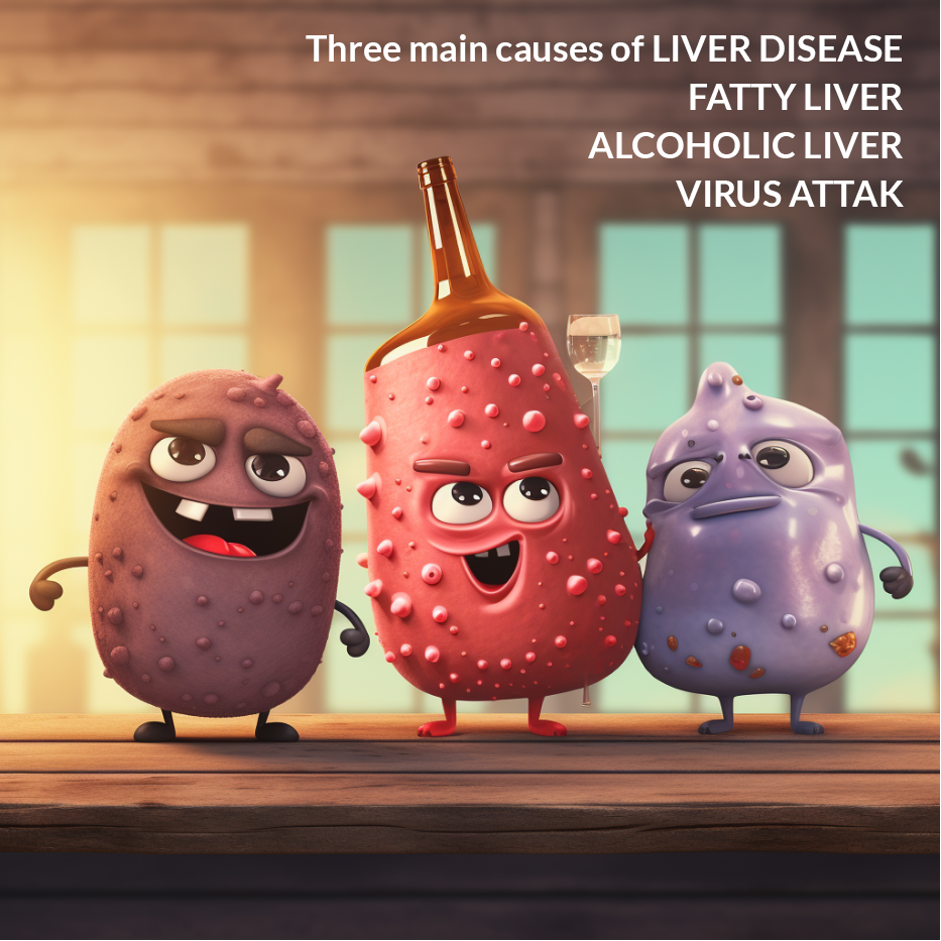What Causes Liver Disease? (Liver Problems, Their Causes, and Symptoms)

The liver, one of the largest organs in the human body, plays a crucial role in various bodily functions, including metabolism, digestion, and detoxification. However, liver disease has become a growing concern globally, affecting millions of individuals each year. Understanding the causes and recognizing the signs of liver disease is essential for early detection and proper management. In this article, we will explore the key factors contributing to liver disease and shed light on its signs and symptoms.
What Is Liver Disease?
Liver disease refers to any condition that affects the liver’s structure or function, impairing its ability to perform vital tasks. It encompasses a broad range of disorders, ranging from mild inflammation to severe liver damage, such as cirrhosis and liver cancer. According to the World Health Organization (WHO), liver diseases account for approximately 2 million deaths annually, making it a significant public health issue [1].
Causes of Liver Disease
Viral Infections
Viral infections are among the leading causes of liver disease worldwide. Hepatitis viruses, including hepatitis A, B, C, D, and E, can infect the liver and cause inflammation, leading to various liver diseases. Hepatitis B and C, in particular, are major contributors to chronic liver disease, with hepatitis C being the most common cause of liver cirrhosis and hepatocellular carcinoma (liver cancer). It is estimated that approximately 325 million people worldwide are living with chronic hepatitis infections [2].
Alcohol Consumption
Excessive alcohol consumption is a well-known risk factor for liver disease. Chronic alcohol abuse can lead to alcoholic liver disease (ALD), which encompasses a spectrum of conditions, including fatty liver, alcoholic hepatitis, and cirrhosis. According to recent statistics, alcohol-related liver disease is responsible for a significant proportion of liver-related deaths, accounting for approximately 46% of all liver-related deaths in the United States [3].
Non-Alcoholic Fatty Liver Disease (NAFLD)
Non-alcoholic fatty liver disease has emerged as a leading cause of liver disease in recent years, closely associated with obesity, diabetes, and metabolic syndrome. NAFLD encompasses a range of conditions characterized by excessive fat accumulation in the liver, leading to inflammation and liver damage. It is estimated that NAFLD affects approximately 25% of the global population, with a higher prevalence in developed countries [4].
Medications and Toxins
Certain medications, toxins, and environmental factors can contribute to liver disease. Overuse or long-term use of medications, such as acetaminophen, non-steroidal anti-inflammatory drugs (NSAIDs), and certain antibiotics, can cause drug-induced liver injury [5]. Additionally, exposure to toxins, such as industrial chemicals, pesticides, and heavy metals, can also result in liver damage.
Autoimmune Diseases
Liver diseases can also arise due to autoimmune disorders, where the immune system mistakenly attacks healthy liver cells. Conditions like autoimmune hepatitis, primary biliary cholangitis, and primary sclerosing cholangitis fall under this category. Autoimmune hepatitis, for instance, predominantly affects women and can lead to chronic liver inflammation and, if left untreated, progress to cirrhosis.
What Are the Signs of Liver Disease?
Recognizing the signs and symptoms of liver disease is crucial for early detection and timely intervention. While the specific symptoms may vary depending on the underlying cause and severity of the liver disease, some common signs include:
- Jaundice: Yellowing of the skin and eyes due to the buildup of bilirubin, a yellow pigment produced during the breakdown of red blood cells.
- Abdominal Pain and Swelling: Pain or discomfort in the upper right portion of the abdomen and swelling due to fluid accumulation (ascites).
- Fatigue and Weakness: Feeling excessively tired or weak, even with minimal physical activity.
- Unexplained Weight Loss: Significant weight loss without intentional dieting or exercise.
- Nausea and Vomiting: Persistent nausea, vomiting, and loss of appetite.
- Changes in Stool and Urine: Dark urine and pale, clay-colored stools.
- Spider Angiomas: Small, spider-like blood vessels appearing on the skin.

Final Thoughts
Liver disease is a significant global health concern, impacting millions of individuals worldwide. Understanding the causes and recognizing the signs of liver disease is vital for early detection, effective management, and preventing irreversible liver damage. Viral infections, alcohol consumption, non-alcoholic fatty liver disease, medications and toxins, and autoimmune disorders are key factors contributing to liver disease. If you experience any symptoms indicative of liver disease or have concerns about your liver health, it is essential to consult a healthcare professional for appropriate evaluation and guidance. Remember, early intervention can significantly affect the outcome and overall prognosis.
References:
- World Health Organization (WHO). (2021). Hepatitis. Retrieved from https://www.who.int/news-room/fact-sheets/detail/hepatitis-b
- World Health Organization (WHO). (2021). Hepatitis. Retrieved from https://www.who.int/news-room/fact-sheets/detail/hepatitis-b
- Centers for Disease Control and Prevention (CDC). (2021). Alcohol-Related Disease Impact (ARDI). Retrieved from https://www.cdc.gov/alcohol/features/ardi.html
- Younossi, Z., Anstee, Q. M., Marietti, M., Hardy, T., Henry, L., Eslam, M., … & Sanyal, A. J. (2018). Global burden of NAFLD and NASH: trends, predictions, risk factors and prevention. Nature Reviews Gastroenterology & Hepatology, 15(1), 11-20.
- Fontana, R. J., Seeff, L. B., Andrade, R. J., Björnsson, E., Day, C. P., & Serrano, J. (2014). Standardization of nomenclature and causality assessment in drug-induced liver injury: summary of a clinical research workshop. Hepatology, 60(2), 698-705.





